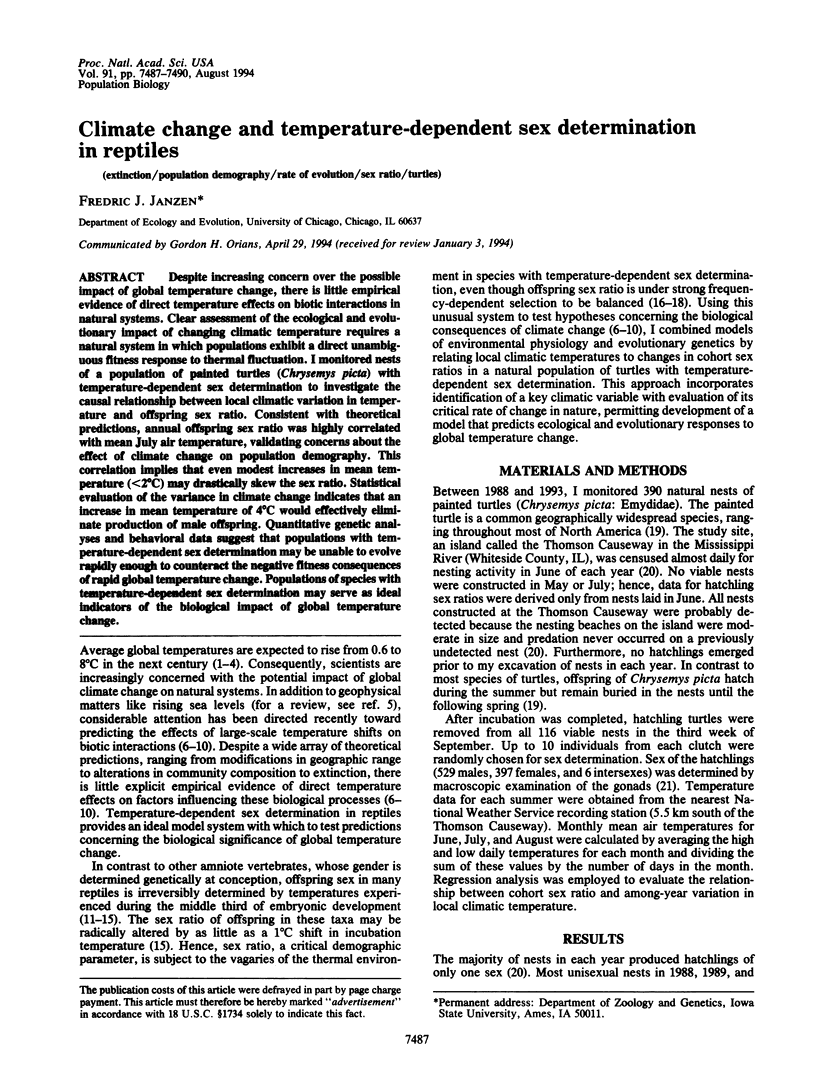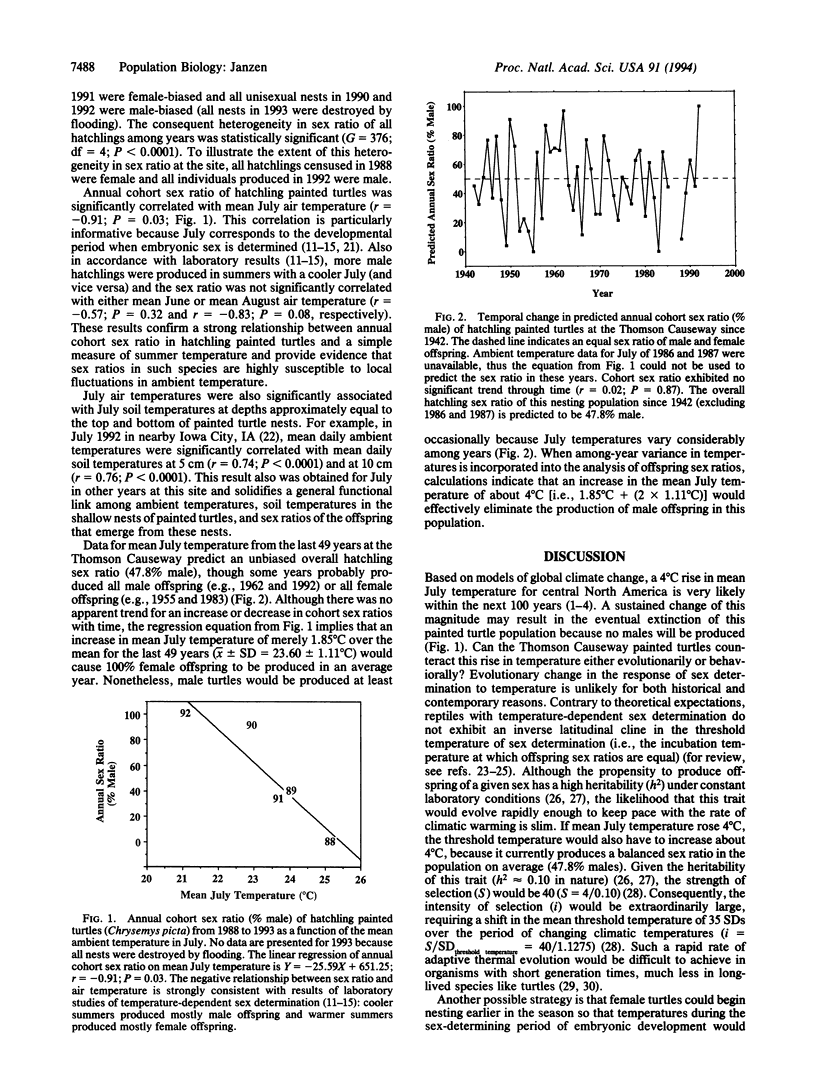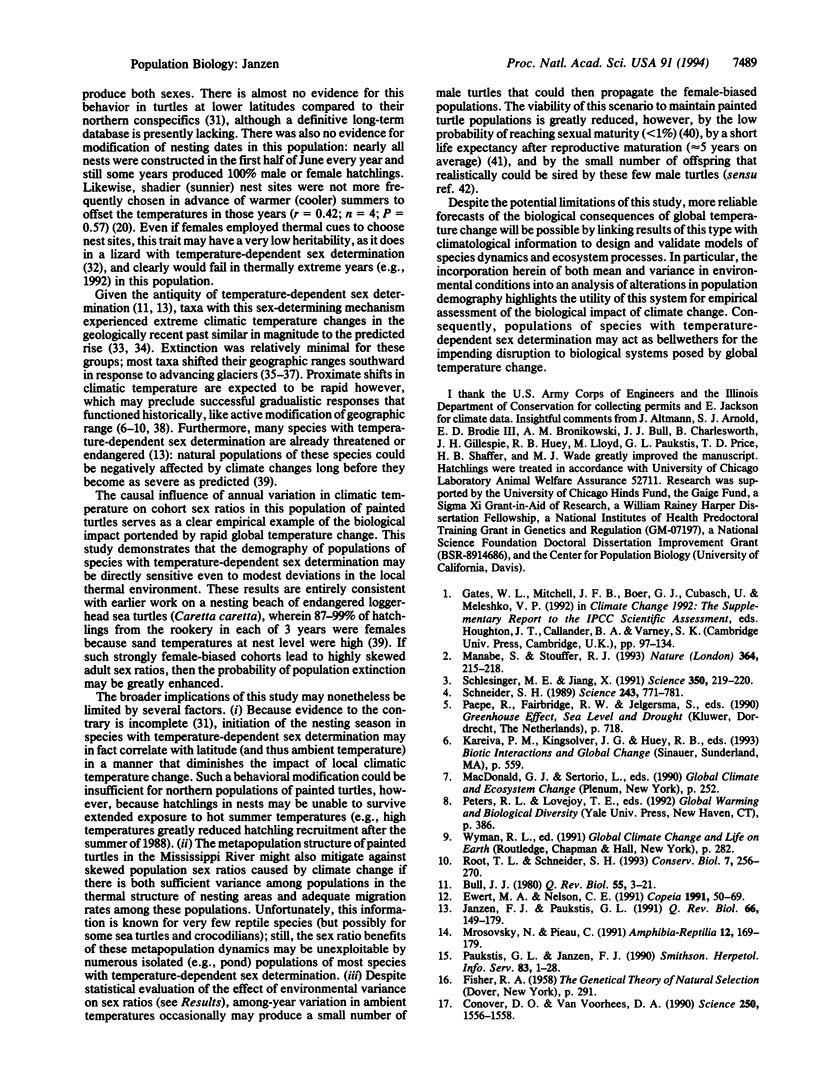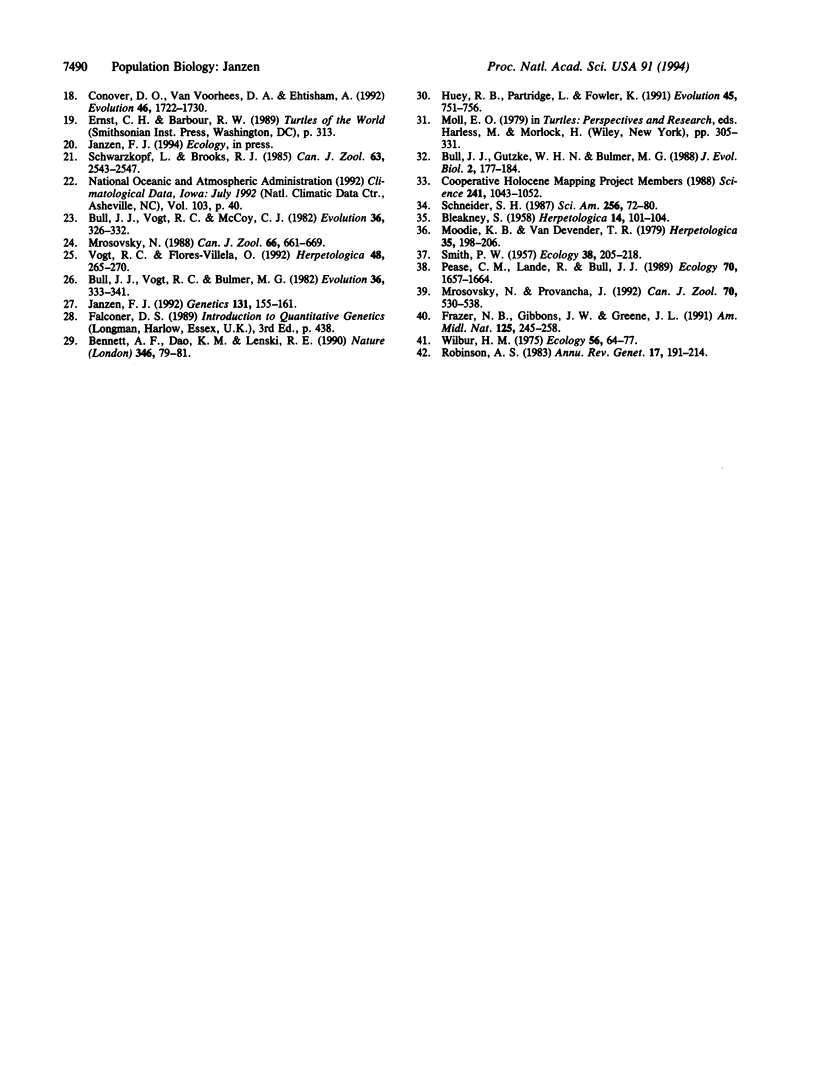Abstract
Despite increasing concern over the possible impact of global temperature change, there is little empirical evidence of direct temperature effects on biotic interactions in natural systems. Clear assessment of the ecological and evolutionary impact of changing climatic temperature requires a natural system in which populations exhibit a direct unambiguous fitness response to thermal fluctuation. I monitored nests of a population of painted turtles (Chrysemys picta) with temperature-dependent sex determination to investigate the causal relationship between local climatic variation in temperature and offspring sex ratio. Consistent with theoretical predictions, annual offspring sex ratio was highly correlated with mean July air temperature, validating concerns about the effect of climate change on population demography. This correlation implies that even modest increases in mean temperature (< 2 degrees C) may drastically skew the sex ratio. Statistical evaluation of the variance in climate change indicates that an increase in mean temperature of 4 degrees C would effectively eliminate production of male offspring. Quantitative genetic analyses and behavioral data suggest that populations with temperature-dependent sex determination may be unable to evolve rapidly enough to counteract the negative fitness consequences of rapid global temperature change. Populations of species with temperature-dependent sex determination may serve as ideal indicators of the biological impact of global temperature change.
Full text
PDF



Selected References
These references are in PubMed. This may not be the complete list of references from this article.
- Bennett A. F., Dao K. M., Lenski R. E. Rapid evolution in response to high-temperature selection. Nature. 1990 Jul 5;346(6279):79–81. doi: 10.1038/346079a0. [DOI] [PubMed] [Google Scholar]
- Conover D. O., Van Voorhees D. A. Evolution of a balanced sex ratio by frequency-dependent selection in a fish. Science. 1990 Dec 14;250(4987):1556–1558. doi: 10.1126/science.250.4987.1556. [DOI] [PubMed] [Google Scholar]
- Janzen F. J. Heritable variation for sex ratio under environmental sex determination in the common snapping turtle (Chelydra serpentina). Genetics. 1992 May;131(1):155–161. doi: 10.1093/genetics/131.1.155. [DOI] [PMC free article] [PubMed] [Google Scholar]
- Janzen F. J., Paukstis G. L. Environmental sex determination in reptiles: ecology, evolution, and experimental design. Q Rev Biol. 1991 Jun;66(2):149–179. doi: 10.1086/417143. [DOI] [PubMed] [Google Scholar]
- Robinson A. S. Sex-ratio manipulation in relation to insect pest control. Annu Rev Genet. 1983;17:191–214. doi: 10.1146/annurev.ge.17.120183.001203. [DOI] [PubMed] [Google Scholar]
- Schneider S. H. The greenhouse effect: science and policy. Science. 1989 Feb 10;243(4892):771–781. doi: 10.1126/science.243.4892.771. [DOI] [PubMed] [Google Scholar]
- Walker Q. J., Salkeld G., Hall J., O'Rourke I., Bull C. A., Tiver K. W., Langlands A. O. The management of oesophageal carcinoma: radiotherapy or surgery? Cost considerations. Eur J Cancer Clin Oncol. 1989 Nov;25(11):1657–1662. doi: 10.1016/0277-5379(89)90314-3. [DOI] [PubMed] [Google Scholar]


